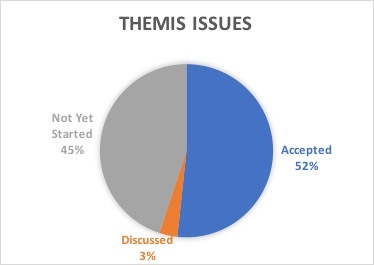Last year, 437 individuals, hailing from 15 different countries and 29 states, representing 118 different organizations, from academia and government and health systems and payers and the medical product industry, and technology providers, with backgrounds in computer science and epidemiology and health policy and informatics and clinical sciences and statistics, descended upon Bethesda MD to take part in the 2017 OHDSI Symposium. For many, it was part of their now-annual tradition, in learning from and contributing to an open science collaborative that is committed to improving health by empowering a community to collaboratively generate the evidence that promotes better health decisions and better care. For 193 attendees, they were ‘new to OHDSI and curious to learn more’, and the Symposium offered great exposure to the community and provided opportunities to engage and join the journey.
Now I bet at least some of you are wondering: “How in the world does OHDSI manage to pull off hosting an annual meeting, one that keeps getting bigger and better each year, while still keeping it free and accessible to the entire community to meaningful engage and participate?”
In short, it takes a community to support a community.
That’s why I want to thank those who have volunteered to be a part of the 2018 OHDSI Symposium organizing committee:
Alex Asiimwe, Ana Szarfman , Andrew Williams , Anthony Reckard , Christian Reich , Christophe Lambert , Chunhua Weng , Hanieh Razzaghi , Jill Hardin , Kristin Feeney , Laura Hester, Lisa Schilling , Marc Suchard , Meghan Nairn , Melanie Philofsky , Mui Van Zandt , Pavithra Rallapalli , Sigfried Gold
I also want to thank Maura Beaton and Elisse Katzman for leading this committee on behalf of the community.
So what does the Symposium Organizing Committee do? They make the magic happen…
Take for example, what they’ve already accomplished to date in 2018.
- They decided that there will indeed be a 2018 OHDSI Symposium! (yay!)
- They agreed on the structure and the dates: The 2018 OHDSI Symposium will be held Tuesday, September 18, with tutorials offered the day before (Mon, Sept17) and the day after (Wed, Sept19) the main event.
- They secured the venue: the 2018 OHDSI Symposium will be held in Bethesda, MD at the Bethesda North Marriott (the same location as last year’s event was held).
They also have started important work to discuss how we get enough financial support through sponsorships and donations to again make the OHDSI Symposium freely available to the everyone who is interested. Columbia University, as OHDSI’s central coordinating center, is again formally hosting the OHDSI Symposium, but it is only possible to pull it off through the generous contributions of the individuals and organization within the community to make the vision a reality.
Over the several months, the committee will be deciding and executing on various topics, like:
-Tutorials - decide on topics and nominate and recruit faculty
-Define meeting agenda - decide on topics and presenters
- Collaborator showcase - decide on format, solicit community for contributions, and moderate sessions
- Peer review of community contributions - abstracts for posters, software demos, lightning talks
- Raising awareness of the event within your community, ensuring we have all stakeholders adequately represented amongst the participants
From now until 18 Sept 2018, you’ll be hearing from members of the organizing committee about their experiences, lessons learned, and teasers to get you jazzed up on the road the 2018 OHDSI Symposium. We look forward to having you all join us on this journey!


 <img
<img Bring your ideas for improving the conventions and any questions that need clarification. Together we can work this out!
Bring your ideas for improving the conventions and any questions that need clarification. Together we can work this out!